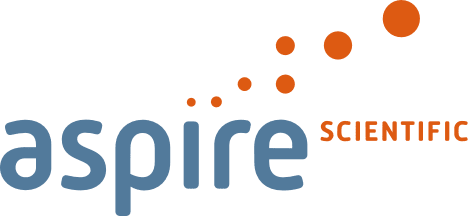The Medical Affairs Professional Society (MAPS) 2024 EMEA Annual Meeting took place in Madrid from 12–14 May. Attendees at the largest medical affairs meeting in Europe had the chance to participate in an interactive programme that explored the meeting’s theme ‘From Action to Impact’ to identify where medical affairs professionals can translate actions into meaningful impacts. If you were in Madrid, you can remind yourself of the key themes with our report from Day 1 below. And if you weren’t able to attend this year’s meeting, why not catch up on what you missed?
Summaries of Day 1
Opening plenary session: From action to impact
KEY TAKEAWAY
- Every action in medical affairs should be evaluated through the lens of patient impact.
The impact of medical affairs was the focus of the opening plenary session. Chair Tamas Koncz (Pfizer) highlighted that while the actions we take in medical affairs are important and often discussed, it is their ultimate impact on patients that truly matters. However, measuring that impact can be challenging. A panel of medical affairs experts comprising Thomas Lang (Novartis), Beatriz Faro Morales (Business Angel), Arantxa Sancho Lopez (Farmaindustria), and Catrinel Galateanu (UCB) joined Koncz to discuss these issues.
Patient health: a common goal to facilitate the biggest impact
Lang opened by emphasising a powerful guiding principle for maximising our impact: prioritising a healthier and longer life for patients. Every task and action within medical affairs, he argued, should be evaluated against this ultimate goal. While the whole organisation should be united by having improving patient health as their main purpose, Faro Morales pointed out that this can sometimes be obscured by the specific goals of different teams and departments in the business.
How do we ensure impact is front of mind?
Content development should start with desired outcomes and then activities should flow from this, not the other way around, stressed Lang. All actions should be planned with impact in mind. Sancho Lopez urged medical affairs professionals to leverage their trusted voice to focus on impact, a sentiment with which Faro Morales agreed.
“Be visible, raise your hand, and challenge the status quo.” – Beatriz Faro Morales
How do we measure impact?
Demonstrating the impact of medical affairs can be a complex task, both internally within companies and externally with stakeholders. As Lang observed, it is hard to define impact with a single measure. Faro Morales suggested that medical affairs teams should directly solicit feedback from patients and physicians. This would help teams to understand what works well and what could be improved, ensuring their efforts translate to better patient outcomes.
Medical affairs – elevated to enterprise co-leadership
Having historically been in a ‘supporting role’, medical affairs has now been elevated to a place of enterprise co-leadership. However, Sancho Lopez noted that it is sometimes difficult for outside stakeholders to discern a distinction between medical affairs and commercial teams. There is definitely room for improvement here. No company can have an impact on patients and society without strong medical affairs. Presenting evidence of impact is an ideal way to communicate the value of medical affairs to stakeholders, emphasise its unique role in the business, and maintain co-leadership status. As Galateanu summarised, medical affairs is a partnership between science and patients, for patients and with patients.
Medical affairs is a partnership between science and patients, for patients and with patients.
Ex-machina – evaluating LLM tools and how best to use them
KEY TAKEAWAY
- Effective prompt generation plays a fundamental role in the successful use of LLM tools for content development.
Joseph Pierce (PrimeVigilance) and Emma Vitalini (Amgen) discussed large language models (LLMs) and tips for effective prompt generation, before putting artificial intelligence (AI)-generated content to the ultimate test.
Pierce began with a brief introduction to LLMs, a type of AI designed to comprehend and generate human-like text. LLMs can be used to create an initial draft of a deliverable that can then be entered into the workflow process and reviewed. Pierce stressed that LLMs are not perfect and have been known to produce ‘hallucinations’, which arise because current open access LLMs use information from the entire internet, some of which is incorrect.
Tips for effective prompting of LLMs
Pierce gave 3 examples of different prompts that can be used to achieve different types of responses from an LLM: factual (What is the capital of France?), open-ended (Create a story where a dragon slays a knight), and conditional (If my product is approved, what volume of medical information requests should I expect?). To generate precise and relevant responses, Pierce suggested focusing on:
- clarity: ensures clear understanding of desired output
- relevance: tailors the response to specific requirements or context
- efficiency: minimises ambiguity, leading to faster and more accurate responses.
To improve the specificity of a prompt, Pierce suggested including relevant background information (ie, contextual details), providing specific criteria or parameters, and giving examples or scenarios. He also emphasised how emotion can be used to change the LLM’s response. For example, tagging “I really need this for career progression” onto the end of a prompt can modify the LLM output.
Can you tell between AI- and human-generated responses?
In the final part of the session, the audience were tasked with distinguishing between AI- and human-generated responses on 3 different topics. Remarkably, the audience were unable to agree on which response was human generated for Topic 1, but were more successful when assessing Topics 2 and 3, with the majority guessing correctly which pieces were generated by AI. Interestingly, audience members noted that some of the language used in the AI responses was typical of the language that has become expected from LLM tools.
Pierce closed the session with a reminder about the importance of reviewing AI generated materials: AI is not taking the human out of the process, it is just making the human more efficient.
AI is not taking the human out of the process, it is just making the human more efficient.
Medical Transformation: the journey from service provider to strategic partner
KEY TAKEAWAY
- Medical Transformation is a key concept for medical affairs teams, designed to establish new responsibilities, embrace leadership, benchmark and measure impact, develop and hire talent, and inspire internal and external stakeholders through scientific innovation and patient value.
In an engaging and interactive session, Lucie Williams (Ipsen), Richard White (Oxford PharmaGenesis), and Dorit Helbig (Ipsen) guided participants through the process of transforming medical affairs teams from being a service provider within the organisation to established strategic leaders and equal partners to the R&D and commercial functions.
Medical evolution is critical for success
The pharmaceutical industry is a rapidly changing environment in which medical affairs is critical and needs to be at the forefront of driving development and progression of therapies. Medical affairs should be viewed as an essential third pillar throughout the organisation, with ‘enterprise leaders’ standing shoulder-to-shoulder with the commercial and R&D functions, not just a bridge!
Medical affairs should be viewed as an essential third pillar – standing shoulder-to-shoulder with the commercial and R&D functions of a pharmaceutical organisation.
The transformation of medical affairs is likely to be a journey, and the degree and speed of success of the transformation will be partly dependent on anticipating challenges and quickly devising solutions.
Process of transformation
An industry-perspective case study outlined a 3-stage process for Medical Transformation:
- Stage 1 – Vision: analysing performance and prioritising change – eg, elevating medical affairs to the executive leadership team, assessing new roles, and establishing a leadership culture.
- Stage 2 – Implementing structure and developing solutions – eg, defining career paths for strong development and retention, defining medical competencies and relevant training, and communicating the concept of Medical Transformation so that it is universally recognised.
- Stage 3 – Change management and implementation – eg, repurposing the medical affairs study review panel, implementing regional structure for clinical operations, executing studies and programmes with precision, establishing excellent first-line medical information enquiry teams, and defining patient engagement best practices.
Collaboration with different stakeholders to make an impact
The importance of medical affairs having a route to provide input at a senior leadership level was highlighted, whereby senior medical affairs colleagues should have direct and regular contact with members of the leadership team to ensure medical affairs perspectives are considered. In addition, medical affairs colleagues should be capable of presenting a robust and engaging story to ensure leadership take notice and help educate them about the impact medical affairs is making. A structure should also be established that allows the medical affairs team to liaise with the R&D and commercial functions to provide medical insights. Medical affairs colleagues can also provide key patient perspectives gained from patient engagement initiatives. Finally, medical affairs should have discussions with the human resources team to help them understand what Medical Transformation is and the benefit to the organisation, and help to inform the interview process for new medical affairs recruits.
A route for medical affairs to provide input at a senior leadership level is critical for effective Medical Transformation.
Keeping your scientific communications platform alive – how to unlock the magic of your SCP
KEY TAKEAWAY
- SCPs can be foundational documents for an integrated medical communications strategy, but a compelling story and cross-functional input are essential for optimal engagement.
Brian Falcone (MedThink SciCom), Clare Baker (Sobi), and Paolo Marchi (UCB) discussed the challenge of integrating Scientific Communication Platforms (SCPs) as a cross-functional resource. An audience poll highlighted the potential need in this area, with only 11% of the respondents stating that they are effectively using SCPs cross-functionally, and 28% not having an SCP at all.
What is an SCP, and what does it include?
The SCP was defined as a scientific, foundational, dynamic, internal communication document that:
- ensures consistent language and referencing
- supports a unified narrative for specific audiences
- informs future evidence requirements
- evolves with the asset life cycle management, competitive landscape, clinical and regulatory environment.
An effective SCP ensures consistent communication across cross-functional teams, including clinical teams, medical affairs, health economics and outcomes research (HEOR), commercial, and corporate communications. MAPS has published a SCP Standards and Guidance document that provides direction on the main steps involved in SCP development.
SCPs should tell a compelling story
All stories should have a narrative progression that contains the following key elements:
- the setting, which should include background on the current situation
- the hook, which is a key piece of information that catches the audience’s attention
- rising insights, with supporting details that reveal deeper insights into the problem or opportunity
- an ‘A-ah moment’, the central finding or insight
- the solution and next steps.
All these elements require consideration of the internal and external stakeholders, the challenges that need to be addressed, the focus of the SCP, where in the product lifecycle this programme fits, and how often the SCP will be updated.
Considering SCP development as a storytelling exercise helps to humanise the narrative and increase engagement.
Overcoming barriers to cross-functional engagement with the SCP
Attendees identified several barriers to optimal engagement with SCPs, such as their reputation as a ‘dry’ document, the time and effort required to keep these (often large) documents up to date, and a lack of input from different stakeholders limiting its use.
Overcoming these barriers could involve creating a compelling narrative to bring the scientific story alive, using techniques such as humanising language and highlighting clinically meaningful impact on patients. Although SCPs can require substantial resource to update regularly, in the future, AI may be helpful in streamlining this process. Cross-functional team involvement (eg, HEOR and market access teams) in SCP development can help to align strategies and messaging from an early stage; it may be helpful to use different mechanisms, such as elevator pitches, for these stakeholders to provide feedback in their preferred format. Developing lexicons and summaries can ensure that terminology is accessible to all stakeholders. Finally, training workshops may help users understand and familiarise themselves with the SCP content and improve engagement at an individual level.
Unlocking the true potential: how can we best quantify the impact and value of medical affairs?
KEY TAKEAWAY
- Effective choice and implementation of metrics is critical for evaluating and demonstrating the impact of medical affairs activities.
This interactive workshop session, led by Lori Klein (Putnam Associates) and Sonal Bhatia (Pfizer), explored best practices for measuring and demonstrating the impact and value of medical affairs.
Framing the discussions, Klein explained that measuring ‘impact’ relates to the “ability to measure how medical affairs activities impact the behaviour, knowledge, and beliefs of healthcare stakeholders to drive better patient outcomes.” Evaluating the impact of medical affairs activities through metrics is becoming more and more important, not least because quantifying impact demonstrates value to key stakeholders, informs future initiatives based on learnings from prior activities, and drives innovation within organisations.
Challenges for adopting metrics in medical affairs
Noting that there is no single metric that can communicate the value of medical affairs, the panel identified further challenges for implementing metrics in medical affairs, including:
- lack of consensus on what ‘good’ looks like: the importance and relevance of different metrics may vary across organisations, therapy areas, and stages of the product lifecycle
- metric overwhelm: the use of too many metrics may lead to confusion and hamper successful application of insights
- capability gaps and budget constraints: lack of skills and resources to implement metrics in the desired way may hinder their effectiveness for measuring impact.
There is no single key metric for measuring the value of medical affairs.
Successful use of metrics in medical affairs
Successful use of metrics depends on defining which metrics to employ and how to implement them. Considerations for choosing and implementing appropriate metrics include:
- ability of the metric to measure depth and breadth of the activity
- relevance of the metric for measuring success
- ability of the metric to be tailored to the product’s development stage
- alignment between the metrics and medical affairs strategic imperatives
- actionable metrics that can be used to refine medical affairs activities
- a frequency of measurement that is relevant and appropriate
- taking an approach that optimises tracking of the metrics.
What kinds of metrics can be used to assess medical affairs impact?
Having identified the ideal characteristics of metrics to measure medical affairs impact, the panel discussed a variety of specific metrics. Presented in order of increasing difficulty to quantify, metrics include:
- interactions – eg, the number of MSL visits or number of education programmes attended
- satisfaction – eg, HCP satisfaction
- knowledge – eg, advancing HCP understanding
- competence – eg, changes in HCP behaviour
- patient health – eg, direct and indirect patient outcomes
- public health – eg, reduction in disease burden.
Commenting on the result of an audience poll that indicated that HCP interactions and satisfaction were the metrics most used by attendees for measuring impact, the panel noted this was expected, given interactions and satisfaction are comparatively easy to measure metrics. However, the aim should be to try and adopt the use of metrics that can measure how medical affairs activities are impacting HCP knowledge and competence, and ultimately improving patient and public health.
Following a breakout session in which attendees had the chance to apply the concepts above in appraising the strengths and weaknesses of different approaches to metrics implementation, the panel reconvened to provide their closing thoughts:
- It is important to adopt the use of metrics to help ensure that medical affairs strategies and tactics have a meaningful impact.
- Metrics are needed that can clearly demonstrate an impact on behaviour, knowledge, and beliefs.
- Generation of metrics evidence should be aligned with stakeholder needs.
- Consideration should be given to integration of data and analytics capabilities to help make metrics adoption more efficient for medical affairs teams.
The aim should be to use metrics that can measure how medical affairs activities are impacting HCP knowledge and competence, and ultimately improving patient and public health.
Written as part of a Media Partnership between ISMPP and The Publication Plan, by Aspire Scientific, an independent medical writing agency led by experienced editorial team members and dedicated, industry experts who will deliver medical writing and communications excellence.









